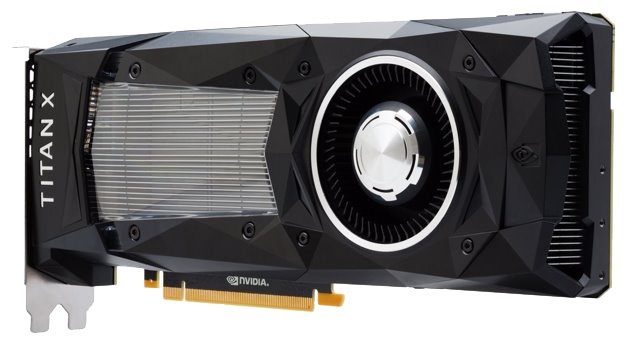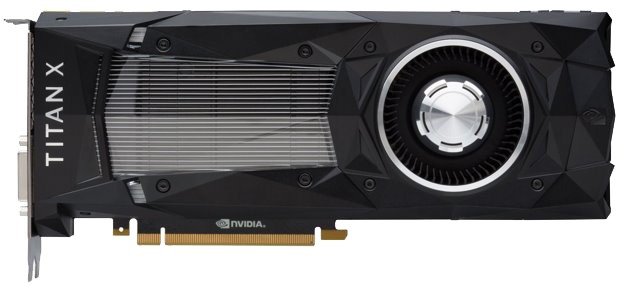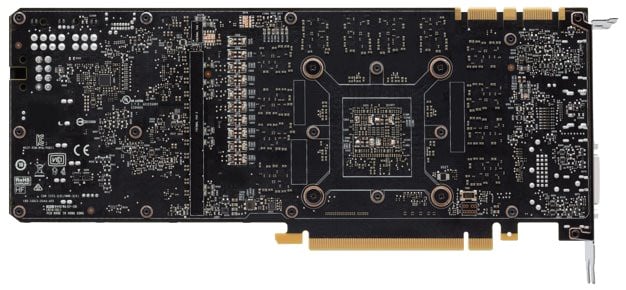NVIDIA TITAN X Review: The Pascal Beast Unleashed
Introducing The New NVIDIA TITAN X
NVIDIA dropped a bomb a couple of weeks back and shocked almost everyone in the enthusiast community with the surprise announcement of the new, Pascal-based TITAN X. If you missed our original coverage, the story went something like this: NVIDIA CEO Jen-Hsun Huang lost a bet, and out of the blue went and gave away a few TITAN X cards at a special AI event that was taking place at Stanford University. That may sound a little far-fetched, but the way this launch shook out, it seems somewhat plausible.
Regardless, as soon as the announcement was posted, we’re sure many of you had two questions in mind – how fast is it? And what’s the deal with the GP102? Thankfully, we can answer both of those questions and more for you today. We’ve just finished putting the brand new NVIDIA TITAN X through its paces and have the full scoop for you laid out on the pages ahead. First up though, some specifications and a quick tour of the card...
Regardless, as soon as the announcement was posted, we’re sure many of you had two questions in mind – how fast is it? And what’s the deal with the GP102? Thankfully, we can answer both of those questions and more for you today. We’ve just finished putting the brand new NVIDIA TITAN X through its paces and have the full scoop for you laid out on the pages ahead. First up though, some specifications and a quick tour of the card...
|
| NVIDIA TITAN X | ||
| Graphics Processing Clusters | 6 | |
| Streaming Multiprocessors | 28 | |
| CUDA Cores (single precision) | 3584 | |
| Texture Units | 224 | |
| ROP Units | 96 | |
| Base Clock | 1417MHz |
|
| Boost Clock | 1531MHz |
|
| Memory Clock (Data rate) | 5005MHz (Effective Speed - ~10Gbps) | |
| L2 Cache Size | 3072KB | |
| Total Video Memory | 12228 MB GDDR5X | |
| Memory Interface | 384-Bit |
|
| Total Memory Bandwidth | 480 GB/s |
|
| Texture Filtering Rate (Bilinear) | 317.4 GigaTexels/sec |
|
| Fabrication Process | 16 nm |
|
| Transistor Count | 12 Billion | |
| Connectors | 3 x Display Port, 1 x Dual-Link DVI, 1 x HDMI | |
| Form Factor | Dual Slot |
|
| Power Connectors | One 8-Pin, One 6-Pin | |
| Recommended Power Supply | 600 Watts |
|
| Thermal Design Power (TDP) | 250 Watts |
|
| Thermal Threshold | 94°C |
|
| Price | $1299 MSRP - Find Them At NVIDIA.Com | |
In light of its specifications, the new TITAN X seems like an absolute beast. In comparison to a GeForce GTX 1080, for example, the TITAN X has 1,204 additional CUDA cores (3,584 vs. 2,560), more texture units (224 vs. 160), and more ROPs (96 vs. 64). It also has more L2 cache (3,072KB vs. 2,048KB) and a wider memory bus (384-bit vs. 256-bit).
| TITAN X (New) | GTX 1080 | GTX 980 Ti | TITAN X (Old) |
GTX 980 | |
| NVIDIA GPU | GP102 | GP104 | GM200 | GM200 | GM204 |
| Architecture | Pascal | Pascal | Maxwell | Maxwell | Maxwell |
| Number of Cores | 3584 | 2560 | 2816 | 3072 | 2048 |
| Core Clock | 1417 MHz | 1607 MHz | 1000 MHz | 1000 MHz | 1126 MHz |
| Memory | 12GB | 8GB | 6GB | 12GB | 4GB |
| Memory Clock | 10000 MHz | 10000 MHz | 7000 MHz | 7000 MHz | 7000 MHz |
| Memory Interface | 384-bit G5X | 256-bit G5X | 384-bit | 384-bit | 256-bit |
| Memory Bandwidth | 480 GB/s | 320 GB/s | 336 GB/s | 336 GB/s | 224 GB/s |
| TDP | 250 watts | 180 watts | 250 watts | 250 watts | 165 watts |
| Peak Compute | 11.0 TFLOPS | 8.2 TFLOPS | 5.63 TFLOPS | 6.14 TFLOPS | 4.61 TFLOPS |
| Transistor Count | 12B | 7.2B | 8.0B | 8.0B | 5.2B |
| Process Tech | 16nm FinFET | 16nm FinFET | 28nm | 28nm | 28nm |
| MSRP | $1,200 | $599 | $649 | $999 | $499 |
The new TITAN X, however, has lower base and boost GPU clocks. Its effective data rate for the memory is the same though, and the TITAN X has more memory on board too -- 12GB vs. 8GB on the GeForce GTX 1080. We should note that the GP102 as it exists on the TITAN X is not the full implementation of the chip. Two SMs have been disabled. The full GP102 has a grand total of 3,840 CUDA cores, as evidenced by the Quadro P6000 that was announced a few days ago.
The GPU at the heart of the TITAN X has a base clock of 1,417MHz and a boost clock of 1,531MHz. The GDDR5X memory on the card is clocked at 5GHz for an effective data rate of 10Gbps. At its reference clocks, the TITAN X offers up to 480GB/s of memory bandwidth and a peak texture fillrate of 317.4 GigaTexels/s, all within a 250 watt power envelope. The card requires a single 8-pin and single 6-pin supplemental power feed.
Pascal TITAN X - Front and Back
Aesthetically, the new TITAN X borrows heavily from the GTX 1080, minus some silver and plus some additional black. What you see pictured above is the only version of the TITAN X that will be for sale. Partners won't be offering the TITAN X and it will be available only through NVIDIA.com. The cooler, however, may (or may not) change at some point to remove the GeForce GTX branding.
Like the GTX 1080, the new TITAN X has a faceted fan-shroud with black and silver elements, a thin, sleek modular back-plate, and an aggressive overall design language that looks great to us. Should you use TITAN X cards in SLI, in adjacent slots, the rear portion of the backplate is also easily removable to allow for better airflow between the cards (we have additional pictures in the gallery below if you'd like to see what the back of the card looks like with half the plate removed).
Vapor Chamber Cooling, Dual Power Connectors...
NVIDIA's TITAN X is outfitted with a die cast aluminum body which is machine finished and heat treated for additional strength and rigidity. The top edge of the card we received features the signature, lighted "GeForce GTX" logo, but -- as we've mentioned -- that may not be permanent.
The thermal solution on the TITAN X is just like the 1080's. It features a radial fan and a relatively large vapor chamber linked to a dense heatsink fin array, also like previous-gen flagship cards. The fan pulls air in from above, blows it across the heatsink, and then vents the heated air outside the chassis. At the rear of the card, a second, small heatsink helps wick heat away from the VRM.
The TITAN X features a 7+2-phase dual-FET power array for its GPU and memory, extra capacitance in its filtering circuitry, and a power delivery network on its PCB that has been optimized for low impedance. All told, these elements result in increased power efficiency and peak-to-peak voltage noise reduction over previous-gen solutions.
The TITAN X Can Power Up To Four Displays Simultaneously
Like NVIDIA's other Pascal-based graphics cards, the outputs on the TITAN X consist of a trio of DisplayPorts, an HDMI 2.0b output, and a dual-link DVI output. The DisplayPorts are 1.2 certified and DP 1.3/1.4 ready, which enables support for 4K displays at 120Hz, 5K displays at 60Hz, and 8K displays at 60Hz (using two cables and multi-stream transport). Up to four display outputs can be used simultaneously for multi-monitor or VR setups.
Enough with the technical jargon; let's hit the benchmarks...














